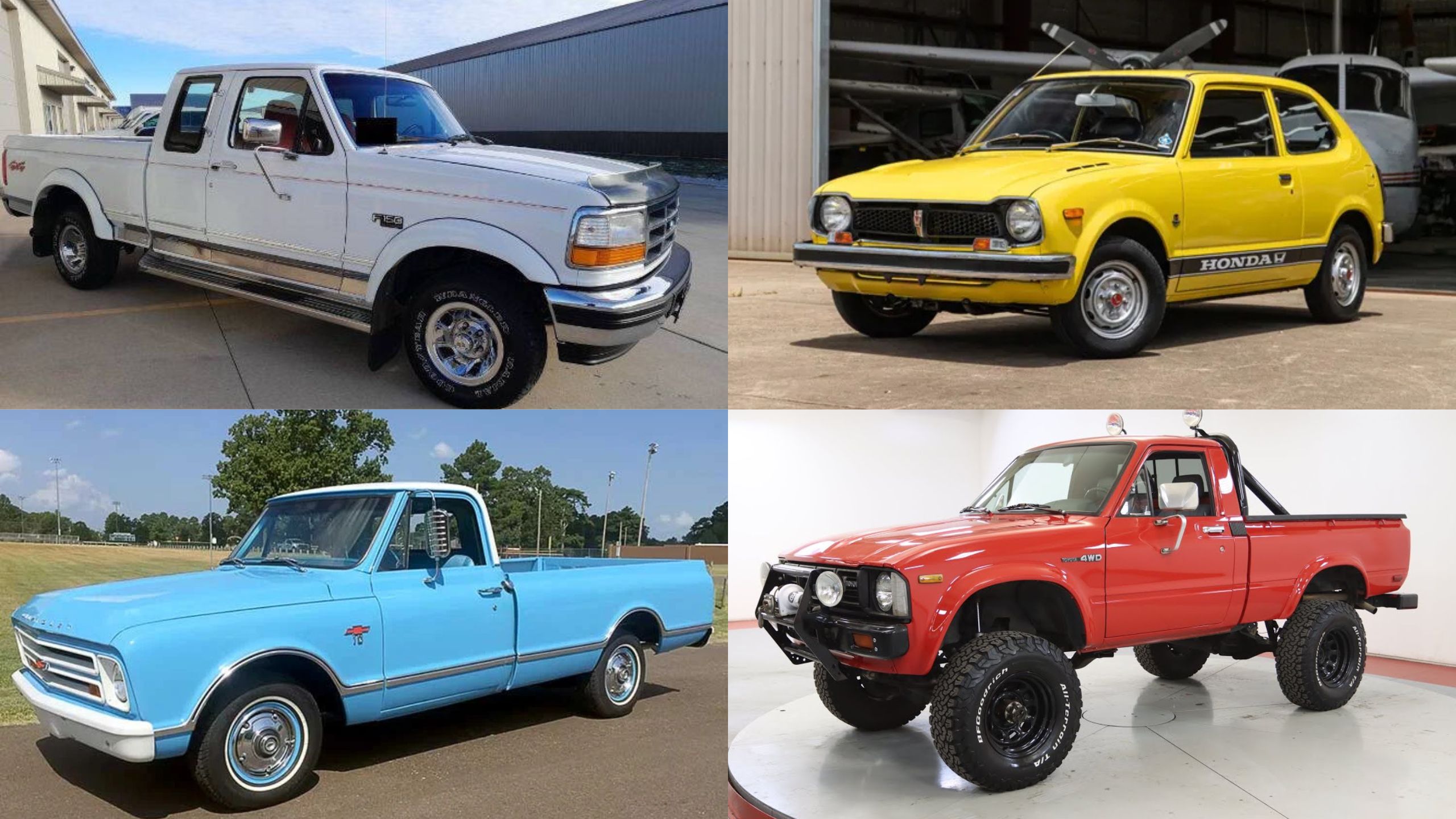In today’s world of planned obsolescence, finding vehicles that can stand the test of time with their original powertrains intact is increasingly rare.
While modern cars offer advanced technology and convenience features, there’s something profoundly impressive about machines engineered decades ago that continue to operate with their factory-installed hearts.
These automotive survivors represent not just engineering excellence but often reflect meticulous maintenance, favorable operating conditions, and sometimes pure luck.
From workhorses that have logged millions of miles to pampered collector cars preserved in climate-controlled garages, these long-lasting vehicles demonstrate what’s possible when quality engineering meets proper care.
The following ten examples represent some of the most impressive original drivetrain survivors on the road today. Each has its own unique story of longevity, showcasing different approaches to building mechanical durability. Their continued operation defies expectations and serves as a testament to the craftsmanship of their era.
As we explore these mechanical marvels, we’ll examine not just what has kept them running, but what lessons their longevity might teach us about building and maintaining vehicles meant to last.
1. Toyota Land Cruiser FJ40 (1960-1984)
The Toyota Land Cruiser FJ40 stands as one of the most enduring examples of automotive reliability ever produced. These boxy, utilitarian 4x4s were built during an era when Toyota was establishing its global reputation for engineering excellence, and they’ve more than fulfilled that promise over the decades.
What makes the FJ40’s longevity particularly impressive is that these weren’t babied showpieces; they were workhorses deployed in some of the world’s harshest environments.
At the heart of the FJ40’s legendary durability is its F-series inline-six engine, most commonly the 4.2-liter 2F variant in later models. This engine is often described as “overbuilt,” featuring a simple design with robust components that prioritize reliability over performance metrics.
The cast iron block and head provide exceptional durability, while the engine’s low-compression ratio allows it to run on lower-quality fuels found in remote regions. This mechanical simplicity extends to the four-speed manual transmission and transfer case, which use thick, hardened gears that resist wear even under extreme loads.

What’s particularly noteworthy about surviving FJ40s is that many continue functioning with original drivetrains despite accumulating staggering mileage figures. Examples with 300,000+ miles on original engines and transmissions are surprisingly common, and some documented cases exceed 500,000 miles with only routine maintenance.
Mechanical fuel injection systems and minimal electronics mean fewer complex systems will fail, while maintenance requires only basic tools and mechanical knowledge. Climate plays a significant role in the preservation of these vehicles.
Desert regions of Australia, the American Southwest, and Middle Eastern countries harbor numerous high-mileage examples with original drivetrains intact, their bodies and undercarriages preserved by dry conditions. Conversely, in humid regions or where salt is used on roads, the mechanical components often outlast the bodies and frames they’re mounted in.
The aftermarket support for these vehicles remains robust, with gaskets, bearings, and wearing components readily available. This allows owners to keep their original powertrains running indefinitely through preventative maintenance rather than replacement.
The availability of parts, combined with the straightforward servicing requirements, has created a virtuous cycle that keeps these original drivetrain examples on the road decades after production ended.
2. Volvo 240 Series (1974-1993)
The Volvo 240 series has earned its place in automotive history not just for its distinctive boxy design but for its exceptional mechanical longevity. These Swedish stalwarts have developed a cult following for their ability to accumulate astronomical mileage figures while maintaining their original drivetrains.
The 240’s reputation for durability was no accident Volvo engineers deliberately over-designed these cars with safety and longevity as primary considerations, sometimes at the expense of performance or cutting-edge features.
The heart of most long-running 240s is the B21/B23/B230 series of inline-four engines, with the later fuel-injected B230F being particularly renowned for its durability. These cast-iron block engines feature oversized main bearings, robust connecting rods, and forged crankshafts that contribute to their legendary durability.
Operating at relatively low stress levels, typically producing around 100-114 horsepower from 2.1-2.3 liters, these engines run well below their mechanical limitations during normal use, substantially extending their operational lifespan.
The transmission options that have proven most durable in the 240 series are the M46/M47 four-speed manual transmissions with overdrive and the AW70/71 automatic transmissions.
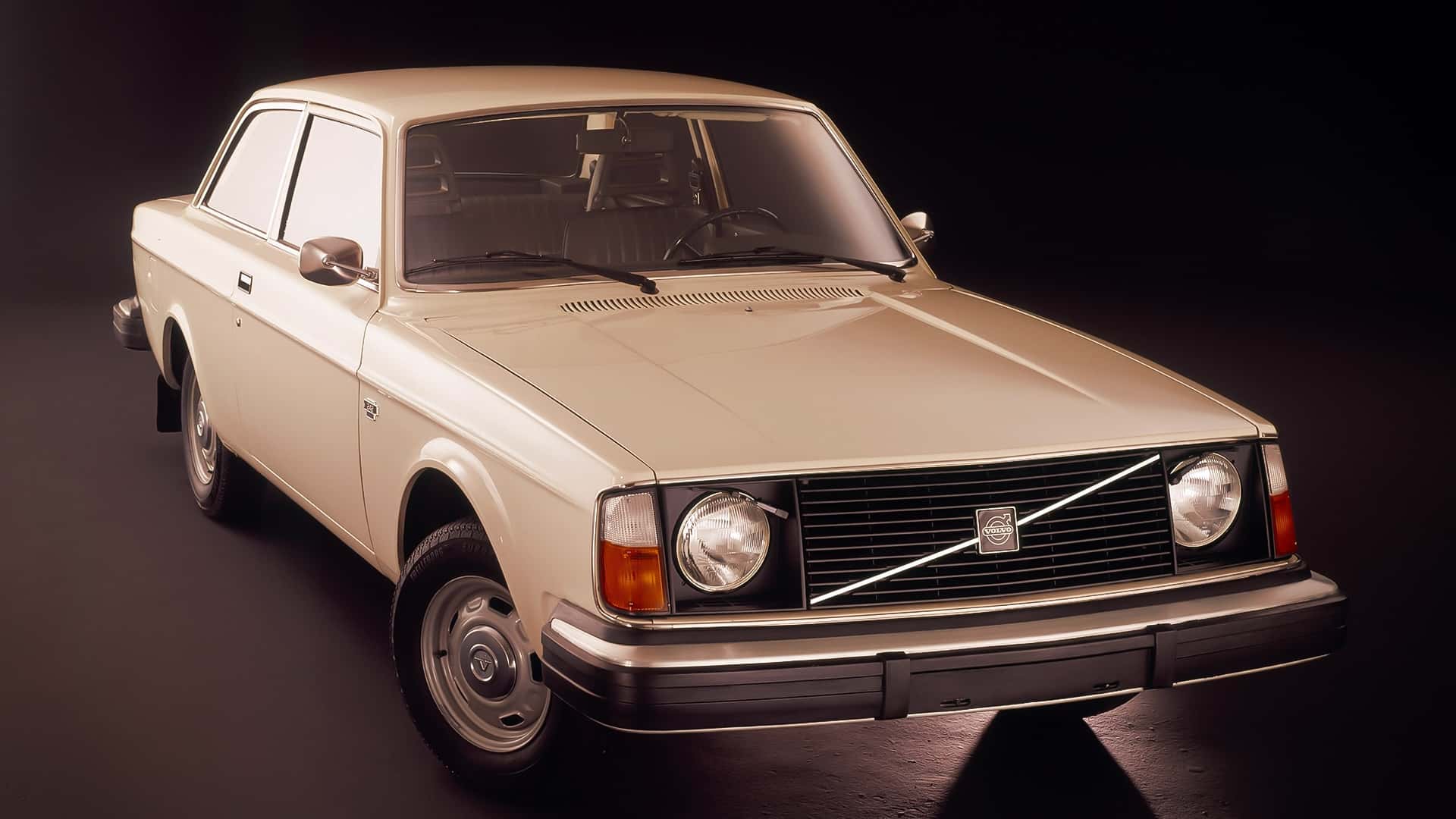
The manual gearboxes, with their direct mechanical operation and robust construction, routinely survive beyond 300,000 miles with proper fluid maintenance. Even the automatic transmissions, often a weak point in many vehicle drivetrains of this era, demonstrate exceptional longevity when serviced at appropriate intervals.
One key factor in the 240’s drivetrain longevity is its cooling system design. Volvo engineers implemented an oversized radiator and efficient coolant flow patterns that prevent the thermal stress that often leads to premature engine failure in other vehicles.
Combined with a high-capacity oil system that maintains proper lubrication even under extreme conditions, these features create an environment where critical engine components face minimal wear.
Documented cases of original-drivetrain 240s exceeding 500,000 miles are not uncommon, and several well-maintained examples have surpassed the million-mile mark without major rebuilds.
Perhaps the most famous is Irv Gordon’s 1966 Volvo P1800 (which shared many mechanical components with the later 240 series), which exceeded three million miles on its original engine before Gordon’s passing in 2018.
What’s particularly impressive about high-mileage 240s is that they often retain not just their core mechanical components, but even peripheral systems like power steering pumps, alternators, and fuel injection components, items that typically require replacement in other vehicles long before the main drivetrain components reach their end of life.
3. Mercedes-Benz W123 Diesel (1976-1985)
The Mercedes-Benz W123 diesel models represent perhaps the most celebrated examples of automotive longevity ever mass-produced. Manufactured during what many consider Mercedes’ engineering golden age, these vehicles were designed with a “cost-no-object” philosophy that prioritized durability above all else.
Today, four decades after production ended, an astonishing number of these cars continue to operate with their original powertrains intact, serving as daily transportation rather than pampered collectibles.
The legendary OM617 five-cylinder diesel engine (and its four-cylinder OM616 sibling) sits at the center of the W123’s reputation for immortality. These naturally aspirated and turbocharged indirect injection diesel engines operate with remarkable mechanical simplicity.
With no electronic engine management systems to fail and fully mechanical fuel injection pumps built by Bosch to exacting standards, these powerplants avoid the complexity that often leads to failure in more modern designs.
The engines feature a cast iron block and aluminum head with impressive wall thickness, allowing multiple rebuilds if necessary, though many examples have never required internal repairs despite accumulating 500,000+ miles.
The transmissions paired with these engines, typically the 717 four-speed manual or 722 three/four-speed automatic, were similarly overbuilt.
The manual transmissions feature synchronizers and gear sets that were designed for commercial applications, while the automatic transmissions use robust planetary gear sets and simplified hydraulic control systems that withstand decades of use with basic maintenance.
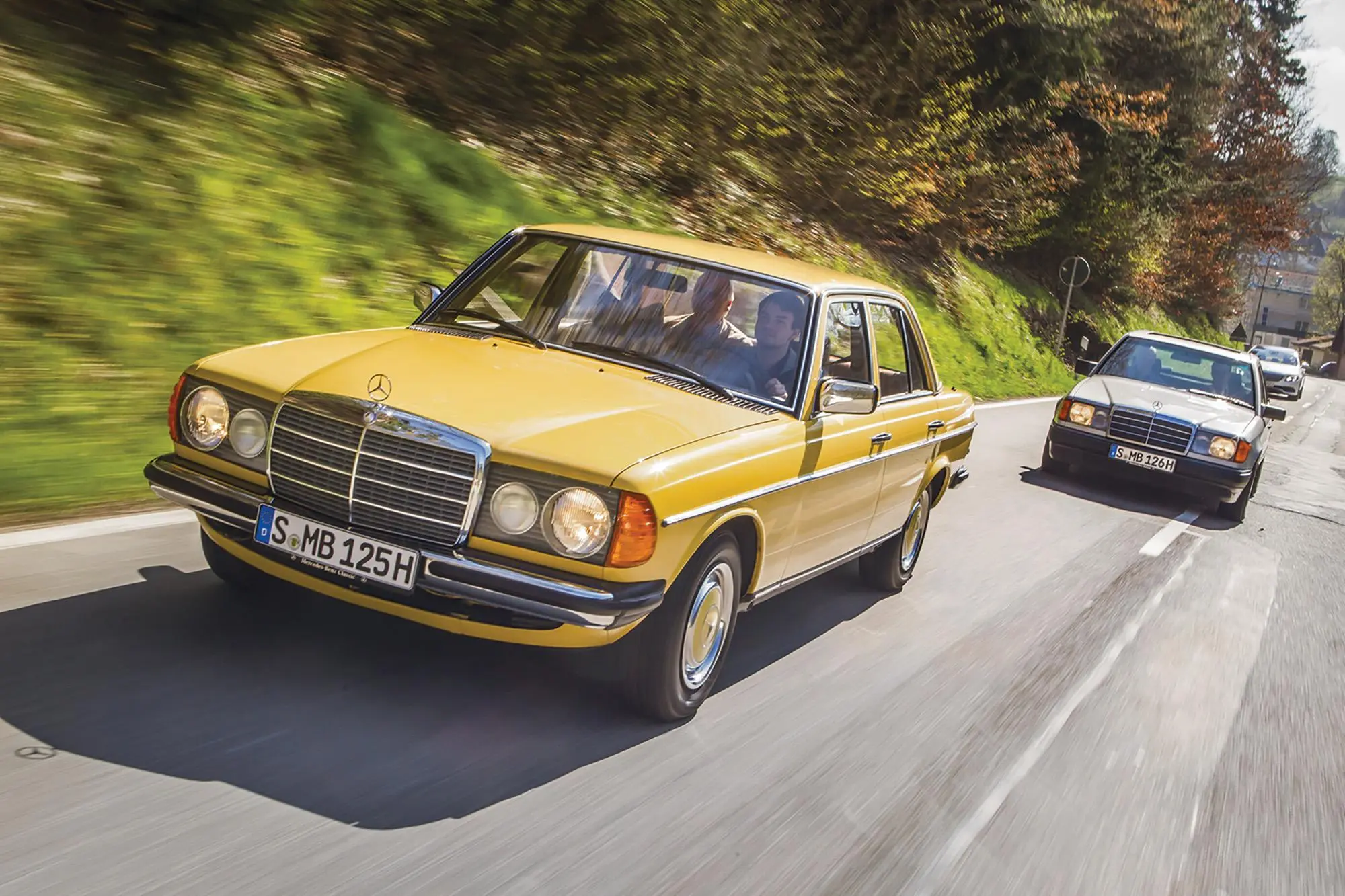
Most impressively, these transmissions don’t require the frequent fluid changes that modern units demand, with many high-mileage examples having gone 100,000+ miles between services without failure.
What separates the W123 diesel from other durable vehicles is how it maintains its operational characteristics even at extreme mileages.
Owners report that 400,000-mile examples often drive identically to those with 100,000 miles, maintaining the same fuel economy, power output, and smoothness throughout their lives.
This consistency speaks to the precision manufacturing that went into these vehicles, with tight tolerances that wear evenly rather than catastrophically. The documented cases of extreme-mileage W123 diesels are numerous and impressive.
Greek taxi driver Gregorios Sachinidis accumulated 2.8 million miles on his 1976 240D before donating it to the Mercedes-Benz Museum, while countless others have exceeded the million-mile mark.
Perhaps more telling than these exceptional cases is the sheer number of original-drivetrain examples still functioning as everyday transport in developing nations, where their mechanical simplicity makes them ideal for environments with limited service infrastructure.
Contributing to this longevity is the engine’s compatibility with various fuel types, from high-quality diesel to less refined options and even vegetable oils with minor modifications, allowing these vehicles to adapt to changing fuel standards over their multi-decade lifespans.
4. Honda Civic CVCC (1975-1979)
The first-generation Honda Civic CVCC represents one of the most elegant engineering solutions to the emissions and fuel economy challenges of the 1970s, and its longevity has proven equally impressive.
While American manufacturers struggled to adapt to new regulations with compromised engines, Honda’s Compound Vortex Controlled Combustion engine provided a clean-running, fuel-efficient powerplant that has demonstrated remarkable durability over nearly five decades of operation.
At the core of surviving CVCC Civics is the EA engine series a compact four-cylinder featuring Honda’s innovative CVCC combustion chamber design. What makes these engines special is their stratified charge combustion system that uses a small pre-chamber with a rich fuel mixture to ignite a leaner mixture in the main chamber.
This design allowed the engine to run exceptionally clean without power-robbing emissions equipment that plagued American cars of the era. The 1.5-liter version produced a modest 53-63 horsepower, but operated with minimal internal stress, contributing significantly to its longevity.
The transmissions in these vehicles are typically four-speed manuals, with an occasional five-speed in later models featuring straightforward designs with robust synchronizers and shift components. Their simplicity translates to durability, with many original transmissions functioning smoothly after more than 300,000 miles.
What’s particularly notable about these gearboxes is that they maintain precise shifting feel even at high mileages, avoiding the vague, notchy operation that often plagues aging transmissions.
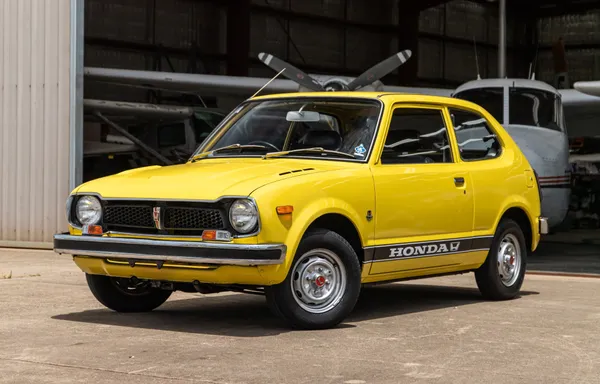
The lightweight nature of the first-generation Civic (weighing around 1,500 pounds) placed minimal strain on its drivetrain components, allowing them to operate well within their design parameters even during spirited driving.
This reduced stress translates directly to extended component life, with many original CVCC engines running smoothly beyond 350,000 miles with only basic maintenance. What makes the longevity of these engines even more impressive is that they achieved it while running extraordinarily clean by 1970s standards.
The CVCC system met strict emissions requirements without catalytic converters or exhaust gas recirculation systems that often compromised reliability in contemporary American vehicles.
This clean operation prevented carbon buildup and oil contamination issues that frequently shortened engine life in other vehicles of the era. Honda’s fanatical attention to precision manufacturing also plays a crucial role in these vehicles’ longevity.
The company’s early adoption of automated manufacturing techniques and rigorous quality control resulted in engines with consistent tolerances and excellent component matching factors that prevent the uneven wear patterns that lead to premature failure in less precisely built engines.
Documented cases of original-drivetrain CVCC Civics exceeding 400,000 miles exist throughout North America, with many owners reporting minimal repairs beyond routine maintenance items like timing belts, water pumps, and clutches.
Their continued operation serves as a testament to Honda’s engineering philosophy that prioritized efficiency through intelligent design rather than through complexity.
Also Read: 10 Family Vans That Keep Running After 15 Years
5. Volkswagen Beetle (Air-Cooled Era, 1938-2003)
The air-cooled Volkswagen Beetle represents one of the most enduring automotive designs in history, with its simple yet robust drivetrain enabling examples to remain operational with original engines and transmissions for extraordinary periods.
From its pre-World War II conception to the final Mexican-built models in 2003, the Beetle’s fundamental mechanical design remained largely unchanged a testament to the soundness of its original engineering.
The heart of the Beetle’s longevity is its horizontally-opposed, air-cooled four-cylinder engine, ranging from the early 1100cc units to the later 1600cc versions.
This engine design offers inherent advantages for durability: the flat configuration reduces vibration, while the air-cooled design eliminates the potential for coolant leaks, frozen blocks, and failed water pumps that often end the lives of water-cooled engines.
With no radiator, hoses, thermostat, or water jacket to fail, the simplicity of the cooling system contributes significantly to the engine’s longevity. The engine’s design incorporates several features that promote exceptional durability, including a forged steel crankshaft, a gear-driven camshaft (eliminating timing belt failures), and a dry-sump oiling system that ensures proper lubrication even under extreme operating conditions.
Notably, the engine was designed to operate at relatively high temperatures compared to water-cooled engines, which provides more complete combustion and reduces carbon buildup, a common cause of wear in engines designed to run cooler.
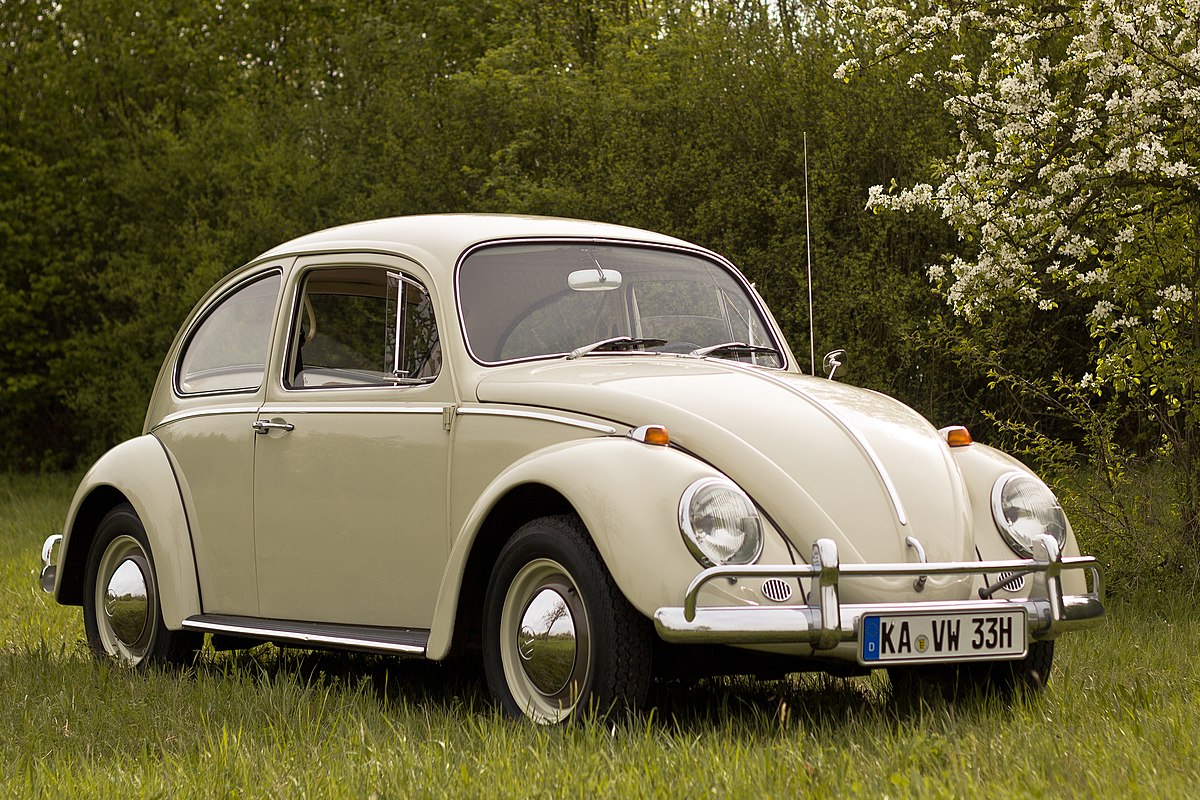
The transmission, typically a four-speed manual with a floor shifter in later models, features a similarly robust design with a focus on mechanical simplicity rather than cutting-edge technology.
The direct mechanical linkage and sturdy synchronizers contribute to its longevity, while the transaxle design with swing axles (or IRS in later models) distributes weight effectively, reducing strain on drivetrain components during operation.
What’s particularly impressive about long-running Beetles is their ability to remain operational even with minimal maintenance. While certainly not ideal for longevity, the mechanical tolerance for neglect exceeds that of most contemporary vehicles.
Stories abound of Beetles purchased after years of abandonment that start and run with minimal intervention, a testament to both their mechanical resilience and the forgiving nature of their design.
The global production of over 21 million Beetles created an ecosystem of readily available parts and widespread mechanical knowledge that enables these vehicles to remain operational indefinitely through incremental maintenance rather than wholesale replacement.
In countries like Mexico, Brazil, and countless developing nations, Beetles with original engines accumulating 500,000+ miles remain a common sight on roadways, often serving as taxis, delivery vehicles, and daily transportation decades after production.
Perhaps the most remarkable aspect of original-drivetrain Beetles is that they often retain their factory engine cases and transmission housings even after internal component replacements, with many documented examples having traveled over one million kilometers on their original engine cases and cylinder heads with only standard rebuilds.
6. Ford F-Series with Inline-Six (1965-1996)
The Ford F-Series trucks equipped with the venerable inline-six engines represent some of the most durable workhorses ever to roll off American assembly lines.
While the V8-powered F-Series trucks often receive more attention, it’s the humble straight-six variants that have frequently demonstrated extraordinary longevity with their original drivetrains intact.
These engines, primarily the 240/300 cubic inch (4.9L) variants, combined with robust manual and automatic transmissions, created powertrains capable of outlasting multiple truck bodies in commercial service. The Ford 300 cubic inch inline-six, introduced in 1965 and produced until 1996, has earned particular recognition for its exceptional durability.
This engine features a cast iron block and head with seven main bearings supporting a forged steel crankshaft, an overbuilt design compared to the typical five main bearings in most straight-six engines of the era.
With a bore of 4.0 inches and a stroke of 3.98 inches, the engine’s nearly square design promotes balanced operation and reduced cylinder wall wear, while its long stroke delivers excellent torque characteristics for truck applications.
What made these engines particularly suited for long-term durability was their understressed nature. Typically producing between 150-170 horsepower in an era when competitive V8s made significantly more, these engines operated well below their mechanical limitations.
Cylinder head combustion chamber designs were optimized for torque production rather than maximum horsepower, resulting in lower operating temperatures and reduced thermal stress on critical components like head gaskets, valves, and pistons.
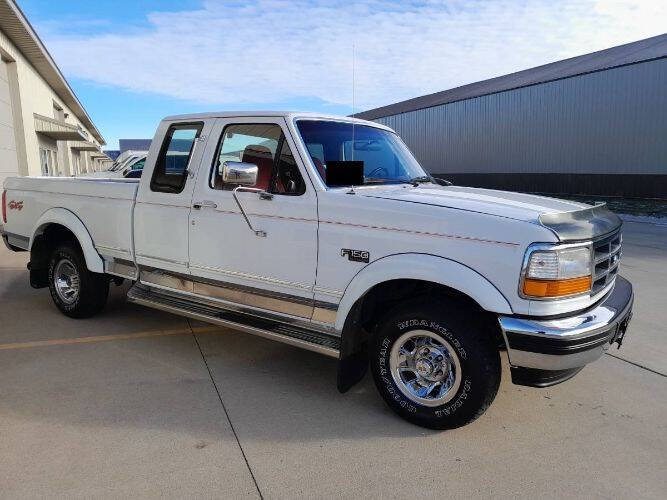
The transmissions paired with these engines, typically the Ford C6 automatic or heavy-duty four-speed manuals, were similarly overbuilt for truck duty.
The C6 automatic, with its simple hydraulic control system and robust planetary gear sets, routinely achieves 300,000+ miles in commercial applications when maintained with regular fluid changes.
The manual transmissions, with their direct mechanical operation and hefty synchronizers, often outlast the vehicles they’re installed in, with documented cases exceeding 500,000 miles without internal repairs.
What sets these F-Series trucks apart from other durable vehicles is their ability to maintain functionality under heavy loads and adverse conditions for decades. Commercial fleet examples often accumulated 400,000+ miles in delivery, utility, and agricultural applications while retaining their original powertrains.
The simplicity of the engine design with its mechanical fuel pump, distributor ignition, and carburetor (or simple fuel injection in later models) means fewer complex systems to fail compared to modern powertrains.
Documented cases of extreme longevity abound, including numerous verified examples exceeding 750,000 miles on original engines and transmissions, particularly in rural and agricultural settings where consistent loading and highway operation promote even wear patterns rather than the stop-and-go cycling that accelerates component failure.
Several F-Series trucks with the 300 inline-six have documented mileage exceeding one million miles, including a 1983 model owned by a Wisconsin deliveryman that surpassed 1.2 million miles before being retired, still running on its original engine.
Contributing to this longevity is the engine’s design resilience to imperfect maintenance. While regular oil changes and basic tune-ups certainly extend lifespan, these engines frequently demonstrate the ability to continue functioning even when maintenance intervals are stretched beyond recommended specifications—a trait particularly valuable in work truck applications.
7. Toyota Hilux Pickup with 22R Engine (1981-1995)
The Toyota Hilux pickup equipped with the legendary 22R series engines has achieved near-mythical status for its drivetrain durability. These trucks have demonstrated the ability to function in some of the world’s most demanding environments while maintaining their original engines and transmissions for hundreds of thousands of miles.
From war zones to remote mining operations, the Hilux with 22R power has become synonymous with mechanical reliability under extreme conditions. The 22R engine family, including the carbureted 22R and fuel-injected 22RE variants, features a 2.4-liter inline-four configuration with a cast iron block and cylinder head.
What distinguishes this engine is its exceptionally robust bottom end, featuring thick cylinder walls, five main bearings supporting a forged steel crankshaft, and a timing chain design that utilizes both primary and secondary chains for enhanced reliability.
The combustion chamber design prioritizes torque production and efficiency over maximum power output, allowing the engine to operate with minimal internal stress even under heavy loads.
The transmissions paired with these engines, typically the R150/R151 five-speed manuals or A43D/A340 automatics, were engineered with similar durability priorities.
The manual transmissions feature synchronizers and gear sets designed for commercial applications, while the automatic transmissions use straightforward hydraulic control systems that resist the electronic failures common in more sophisticated designs.
Both transmission types demonstrate exceptional tolerance for harsh operating conditions, with many examples exceeding 300,000 miles without internal repairs.

What makes the longevity of these drivetrains particularly impressive is the environments where they typically operate. Unlike collector vehicles preserved in climate-controlled garages, Hilux pickups with 22R engines routinely serve in commercial roles where they endure extreme temperatures, poor fuel quality, dust-laden air, and irregular maintenance intervals.
Their continued operation under these conditions speaks to the fundamental durability of their design and the quality of their manufacturing. The 22R engine’s mechanical simplicity contributes significantly to its longevity.
With no electronic engine management in early versions and minimal electronics in later fuel-injected variants, these engines avoid the complex failure points that often sideline more technologically advanced powertrains. The mechanical fuel pump, distributor ignition, and straightforward fuel delivery systems require only basic maintenance to remain operational for decades.
Documented cases of exceptional longevity include numerous examples exceeding 500,000 miles on original engines and transmissions, particularly in Australia, Africa, and the Middle East, where these vehicles serve as primary transportation in remote areas.
Several verified cases exist of Hilux pickups exceeding one million kilometers (620,000 miles) without major engine or transmission rebuilds often continuing to operate commercially rather than being retired to collector status.
The engine’s design resilience extends to its adaptability to varied fuel quality, a critical factor in global markets where fuel standards vary widely.
The 22R’s relatively low compression ratio and robust fuel system components allow it to operate on lower-octane fuels without detonation issues that would damage more highly stressed engines, contributing to its worldwide reputation for reliability in regions with limited infrastructure.
The continued operation of these trucks with original drivetrains decades after production ended represents a testament to Toyota’s engineering philosophy during this period, one that prioritized long-term durability over cutting-edge performance or features.
8. Chevrolet/GMC Trucks with Small-Block V8 (1967-2002)
The small-block V8-powered Chevrolet and GMC trucks produced from the late 1960s through the early 2000s represent some of America’s most enduring workhorses, with countless examples still operating on their original drivetrains after decades of service.
These trucks, particularly those equipped with the 350 cubic inch (5.7L) variants of GM’s legendary small-block architecture, combine robust engineering with straightforward maintenance requirements to achieve exceptional longevity in real-world applications.
The heart of these long-lasting trucks is the small-block Chevrolet V8, an engine design that remained fundamentally unchanged from 1955 until the introduction of the LT1/Vortec era in the mid-1990s.
What makes these powerplants particularly durable is their overbuilt bottom end, featuring a deep-skirt block design, four-bolt main bearing caps on many versions, and a forged steel crankshaft in earlier models.
The cylinder head design, with its efficient combustion chambers and straight-line ports, provides excellent thermal management that prevents the hotspots that often lead to premature failure in less optimized designs.
While available in various displacements from 262 to 400 cubic inches, the 350 cubic inch version has proven particularly long-lived. It’s optimal bore-stroke ratio minimizes piston side loading while providing excellent torque characteristics for truck applications.
In truck form, these engines typically produced between 160-210 horsepower, far below their mechanical limitations, allowing them to operate with minimal internal stress, even when pulling heavy loads or operating in extreme temperatures.

The transmissions paired with these engines, predominantly the TH350/TH400 automatic or the Muncie/New Venture manual transmissions, were similarly engineered for durability rather than cutting-edge technology.
The automatics feature simple hydraulic control systems that resist the electronic failures common in modern transmissions, while the manuals employ robust synchronizers and shift components capable of withstanding decades of heavy use.
What distinguishes these trucks from other durable vehicles is their continued functionality despite accumulating extraordinary mileage in demanding service roles. Commercial fleet examples often exceeded 400,000 miles in delivery, utility, and agricultural applications while maintaining their original powertrains.
The mechanical simplicity of these vehicles with their distributor ignition, carburetion (or simple throttle body injection in later models), and hydraulic valve trains means fewer complex systems to fail compared to modern designs.
Documented cases of exceptional longevity include numerous examples exceeding 500,000 miles on original engines and transmissions, particularly in rural settings where consistent highway operation promoted even wear patterns rather than the stop-and-go cycling that accelerates component failure.
Several verified cases exist of these trucks surpassing one million miles, including a 1991 Chevrolet C1500 owned by a Wisconsin courier that accumulated 1.2 million miles on its original 350 V8 before being retired, still running.
Contributing to this longevity is the engine’s remarkable tolerance for varied maintenance practices. While regular oil changes and basic tune-ups certainly extend lifespan, these engines frequently demonstrate the ability to continue functioning even when maintenance intervals are stretched beyond recommended specifications a trait particularly valuable in work applications where downtime means lost revenue.
The widespread production of these engines created an ecosystem of readily available parts and mechanical knowledge that enables these vehicles to remain operational indefinitely through incremental maintenance rather than wholesale replacement.
9. Porsche 911 Air-Cooled Models (1964-1998)
The air-cooled Porsche 911 represents a unique combination of high-performance engineering and extraordinary durability, with numerous examples continuing to operate on their original drivetrains despite decades of spirited driving.
From the early 2.0-liter models of the mid-1960s to the final 3.6-liter variants of the 993 generation, these sports cars demonstrate that performance and longevity need not be mutually exclusive when engineering prioritizes mechanical integrity over chasing maximum output figures.
At the heart of the air-cooled 911’s durability is its flat-six engine a horizontally opposed design that offers inherent balance and reduced vibration compared to inline or V-configuration engines. While displacement increased from 2.0 to 3.6 liters over three decades of development, the fundamental architecture remained consistent: aluminum alloy block and heads with air cooling provided by a powerful fan drawing air through finned cylinders and heads.
This cooling approach eliminates the potential for coolant-related failures that often sideline water-cooled engines, while the engine’s horizontally opposed layout provides optimal cooling airflow across all cylinders.
The transmissions paired with these engines primarily feature five-speed manuals until the introduction of six-speed units in the 993 generation, which feature robust engineering that complements the engines’ durability.
With their precisely machined shift components and substantial synchronizers, these gearboxes maintain accurate shifting characteristics even after hundreds of thousands of miles, with many original transmissions continuing to function flawlessly after 200,000+ miles of operation.
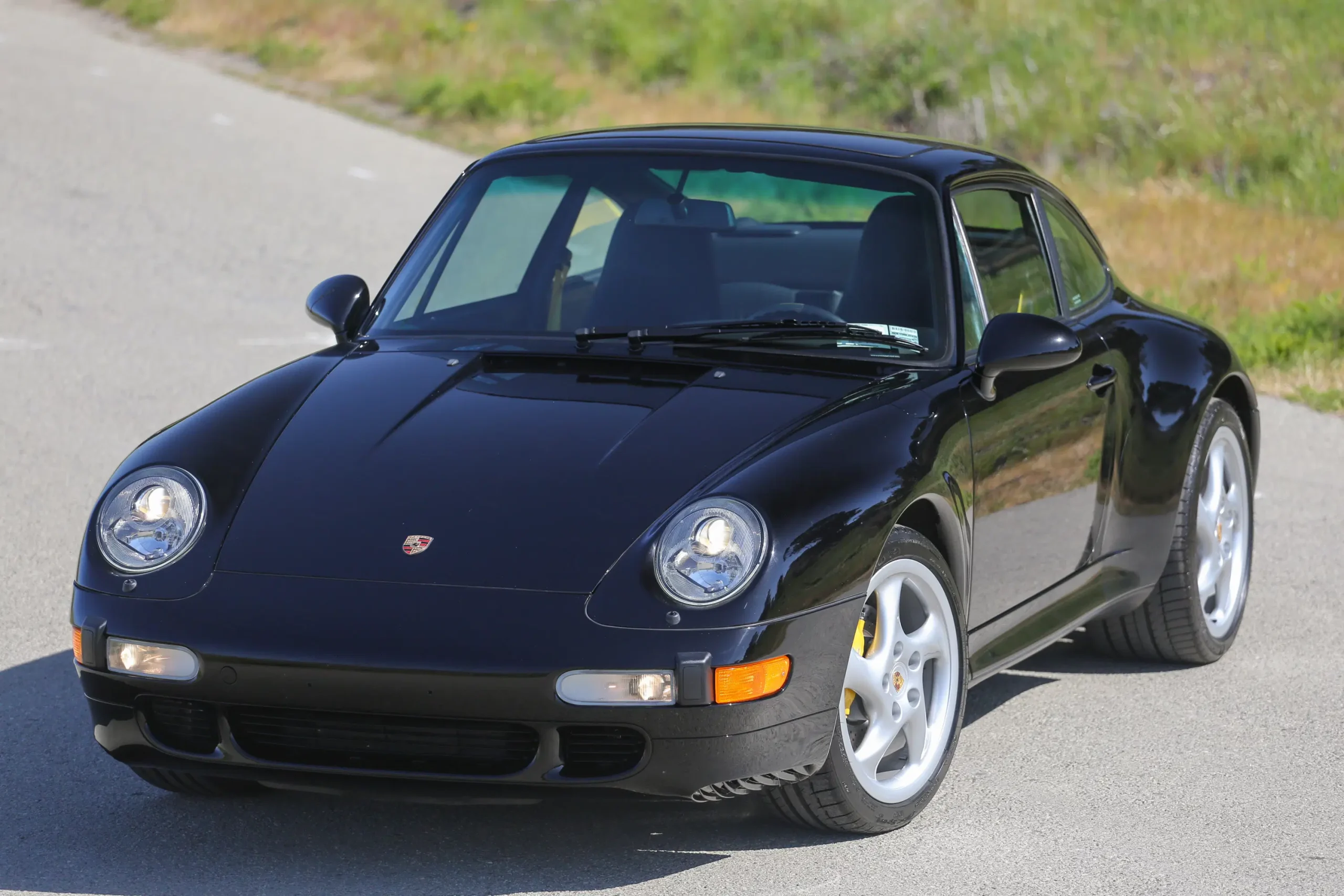
What makes the longevity of air-cooled 911 drivetrains particularly impressive is that they achieve it despite operating at substantially higher performance levels than most vehicles known for durability.
Unlike utility vehicles that prioritize longevity through understressed operation, 911 engines frequently operate at high RPMs and thermal loads yet still demonstrate exceptional lifespan. This durability stems from Porsche’s engineering philosophy that emphasizes robust component design, precision manufacturing, and extensive testing under extreme conditions.
The air-cooled 911 engine incorporates several features that promote longevity despite its high-performance application. The crankcase utilizes a sturdy closed-deck design with Nikasil-coated cylinders in later models, providing exceptional rigidity and wear resistance.
The valve train employs solid lifters rather than hydraulic components in many versions, eliminating a common failure point in high-RPM engines, while the engine’s dry-sump oiling system ensures proper lubrication even under high lateral G-forces during cornering.
Documented cases of exceptional longevity include numerous examples exceeding 300,000 miles on original engines and transmissions, with several verified cases surpassing 500,000 miles.
Perhaps most famous is the 1976 Porsche 911 Turbo owned by Canadian businessman Bill MacEachern, which has accumulated over 1.2 million kilometers (approximately 745,000 miles) on its original engine, requiring only routine maintenance and minor refreshing of wearing components.
Contributing to this longevity is the meticulous maintenance culture that typically surrounds these vehicles. While they can tolerate some maintenance lapses, most long-running examples benefit from owners who adhere strictly to or exceed factory service recommendations, often performing oil changes at intervals well below the manufacturer’s specified mileage.
This preventative approach, combined with the fundamental durability of the design, enables these high-performance vehicles to achieve lifespans typically associated with more utilitarian machinery.
The 911’s rear-engine layout, though sometimes criticized for its handling characteristics, contributes to drivetrain longevity by placing the engine and transmission in a protective position behind the passenger compartment, shielding these components from frontal impacts and road debris that can damage drivetrain components in front-engined vehicles.
10. Mercedes-Benz W124 (1984-1995)
The Mercedes-Benz W124 series represents the culmination of the company’s over-engineering philosophy before cost considerations began taking precedence in later models.
These mid-size executive cars, particularly those equipped with the inline-six gasoline and diesel engines, demonstrate exceptional drivetrain longevity that has allowed many examples to remain in service with their original powertrains after more than three decades and extraordinary mileage accumulation.
The inline-six engines that power the most durable W124 variants, the M103/M104 gasoline and OM603/OM606 diesel series, share a fundamental architecture that prioritizes durability through robust design.
These engines feature a cast iron block (or aluminum in later M104s) with seven main bearings supporting a forged steel crankshaft, providing exceptional rigidity and wear resistance.
The cylinder head designs incorporate dual overhead camshafts in later models, actuating valves through robust followers that maintain consistent valve timing even after hundreds of thousands of miles of operation.
The transmissions paired with these engines, typically the 722.3/722.4 four-speed automatics or the 717 five-speed manuals, were engineered with similar durability priorities.
The automatic transmissions feature hydraulic control systems with mechanical backup modes that allow continued operation even if electronic components fail, while the manual transmissions employ synchronizers and shift components capable of maintaining precise operation well beyond 300,000 miles.
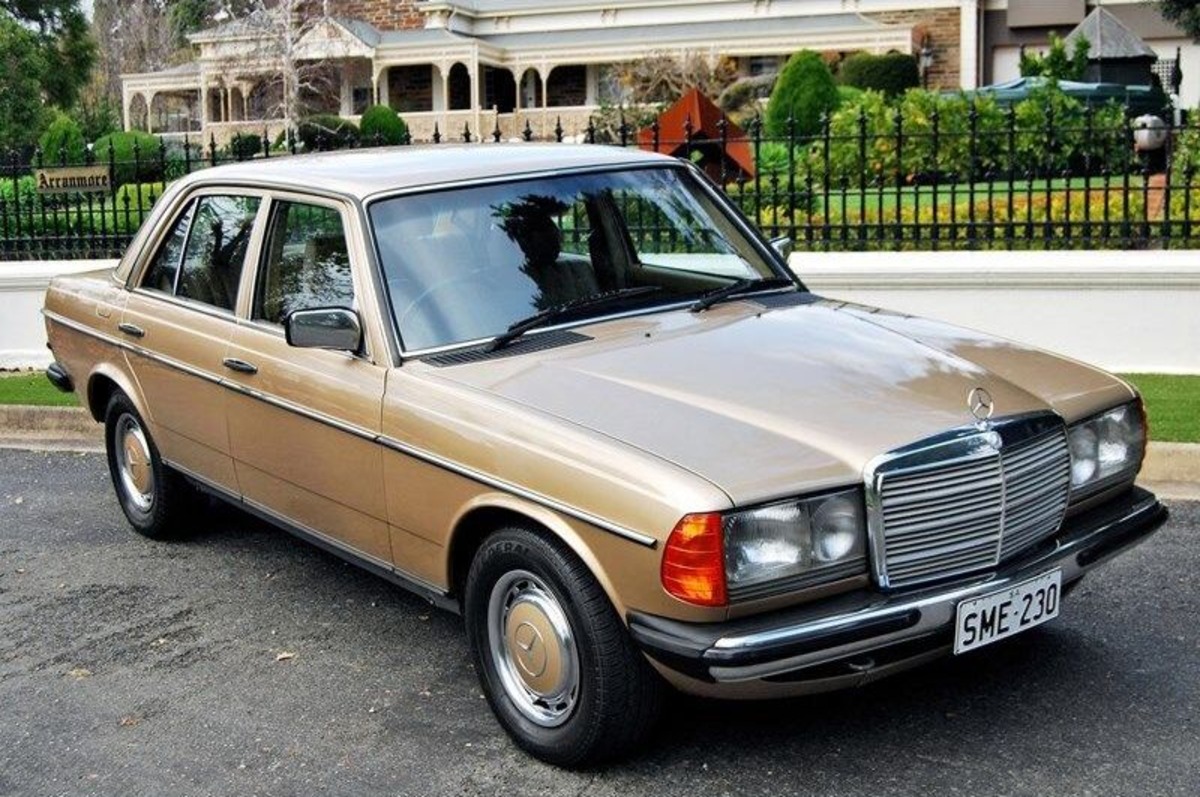
What distinguishes the W124 from other durable vehicles is its ability to maintain the sophisticated ride, handling, and comfort characteristics that defined its original engineering brief, even as mileage accumulates into extraordinary figures.
Unlike simpler vehicles that may continue running but lose their refinement, properly maintained W124s with 300,000+ miles often drive nearly identically to low-mileage examples, a testament to the precision manufacturing and component quality that went into their production.
The M104 3.2-liter straight-six gasoline engine deserves particular recognition for its durability, featuring a dual-row timing chain setup that addressed the single-chain weakness of earlier M103 engines.
This engine combines remarkable smoothness with exceptional longevity, with numerous documented examples exceeding 500,000 miles without internal repairs. Similarly, the OM606 diesel engines feature timing gears rather than chains or belts, eliminating a common failure point in high-mileage engines.
Documented cases of exceptional longevity include numerous taxi and livery service examples exceeding 600,000 miles on original engines and transmissions, particularly in European markets where these vehicles served as workhorses in commercial applications.
Several verified cases exist of W124s surpassing one million kilometers (approximately 620,000 miles), with a Greek taxi driver’s 300D accumulating over 4.6 million kilometers (approximately 2.9 million miles) before being retired, still running on its original engine block.
Contributing to this longevity is the sophisticated engineering that went into seemingly minor components that often cause failures in lesser vehicles. The cooling system, for example, features an expansion tank design that effectively eliminates air pockets that can cause localized overheating in conventional systems.
The electrical systems employ military-grade connectors and wiring harnesses that resist corrosion and fatigue cracking, which typically sideline vehicles long before mechanical components reach their end of life.
Perhaps most impressively, many high-mileage W124s maintain fully functional auxiliary systems alongside their core drivetrains, with climate control systems, power accessories, and even complex suspension components continuing to operate as designed despite decades of use.
This holistic durability stems from Mercedes’ engineering philosophy during this period, which approached the vehicle as an integrated system rather than a collection of components.
Also Read: 10 Best Vehicles for Rural Postal Workers That Prove Their Utility

